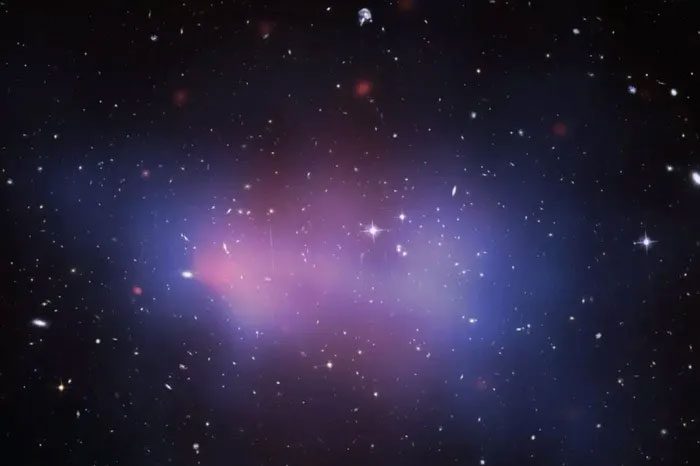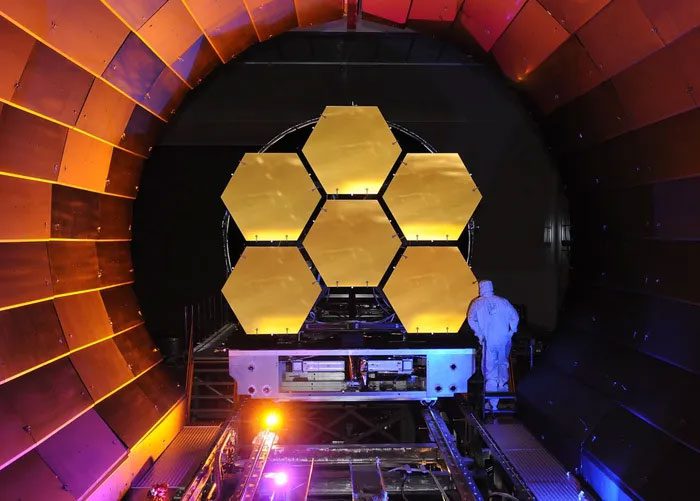The James Webb Space Telescope has just discovered the smallest galaxy outside the Milky Way, along with a giant star never seen before.
In a study published on arXiv, scientists from the University of Cantabria (Spain) have uncovered 28 previously unknown galaxies, including the smallest galaxy outside the local universe that humanity has ever discovered.

The El Gordo galaxy acts as a giant lens, helping to see galaxies behind it. (Image: NASA).
To observe the galaxy, scientists collected data from the James Webb Space Telescope, using the heaviest known galaxy cluster, named El Gordo, as a giant lens.
El Gordo was first discovered in 2011. Calculations show that the galaxy has a mass 3 million trillion times that of the Sun, reaching the limits of the standard cosmological model.
Thanks to its enormous mass, the galaxy can be used as a gravitational lens, capable of bending and magnifying light from stars and galaxies behind it—objects that we cannot see in a conventional way.
Based on the infrared light data from El Gordo, scientists found dozens of new galaxies. Among them is a dwarf galaxy discovered from the strange light fluctuations of another galaxy, named La Flaca.
Through El Gordo, the light from the galaxy is stretched into an arc shape. “The only way to explain this phenomenon is a tiny galaxy, possibly a dwarf galaxy,” Diego stated.
The mass of this galaxy is believed to be less than 1,000 times that of the Milky Way. If the data is confirmed, it would be the smallest galaxy ever observed outside the local galaxy cluster, which includes the Milky Way and some neighboring galaxies.
Diego mentioned that if confirmed, this galaxy could fall outside some current physical models. “In fact, you might notice that this galaxy does not fit some dark matter models, which suggest that dark matter could have a high temperature. High-temperature dark matter would have too high a velocity to form a small galaxy like this,” Diego shared.

The gold-coated mirrors of the James Webb. (Image: NASA).
According to NewScientist, Diego and his colleagues also discovered a red supergiant star, a type of star never seen outside the local galaxy cluster, identified thanks to the infrared sensors of James Webb.
If similar red stars are discovered, scientists could use them to estimate the distance of distant objects while calculating the expansion of the universe.
Currently, scientists use supernovae—the process marking the end of an old star’s life—to make these calculations. However, this method does not always yield accurate results.
The James Webb was launched in December 2021 and officially began operations in July this year after calibration. It is the successor to the Hubble Space Telescope, designed to detect ancient stars and galaxies, aiding in the understanding of the universe’s formation history. Modern tools allow James Webb to collect more details than Hubble.
Felipe Menanteau, a researcher from the University of Illinois, appreciates the discovery of distant dwarf galaxies and the red supergiant star outside the local cluster. However, he notes that more data is needed to contribute to the study of cosmic history.





















































